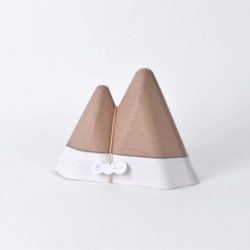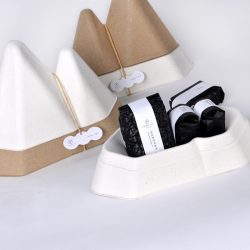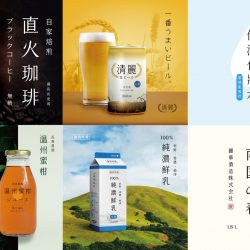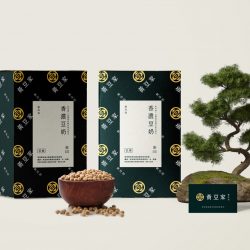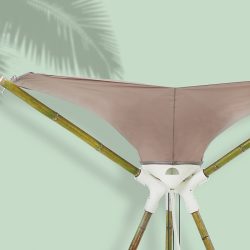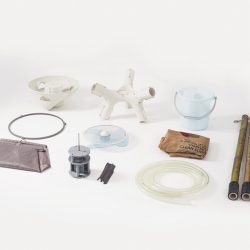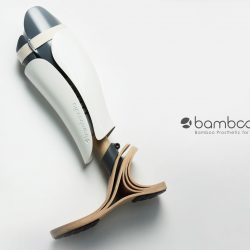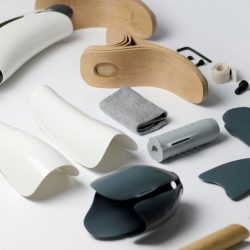THE ONLY INTERNATIONAL CHINESE-SPEAKING FOCUSED DESIGN AWARD IN THE WORLD JUST ANNOUNCED THE BEST WINNERS LAST DECEMBER
‘Convergence’ was the theme of 2017’s Golden Pin Design Award, the design award for Huaren (Chinese speaking) designers that has been consecutively held since 1981. The categories range from visual communication, packaging design and product design to spatial design with renowned Taipei-based motion graphic design studio, BITO being the mind behind the theme. Keng-Ming Liu, the studio’s founder described the origin of the theme as a reflection of Asia’s contemporary design landscape where design creation converges in a place of great cultural diversity, dynamically clashing with new technologies and innovations. Such tendency happens not only with one particular discipline of design, but encompasses all creative fields that now overlap and are interconnected. The term ‘convergence’ embodies the coming together and interaction of the diversity of the design creations, the exhibition, graphic design and motion graphics, which is essentially the visual flow of abstract objects.
Golden Pin Design Award is held annually during the beginning of December at Songshan Cultural and Creative Park in the Xinyi district at the center of Taipei, Taiwan. The good thing about hosting the event here is that everything is brought together in one venue. The exhibition that showcases the finalists takes place at the Taiwan Design Centre with the forum and awards night being held at Eslite Songyan Spectrum Performance Hall and some of the awarded products (mostly Taiwanese brands) being available for purchase at Eslite Songyan Store and the little design shop tucked away within the space of the Taiwan Design Museum.
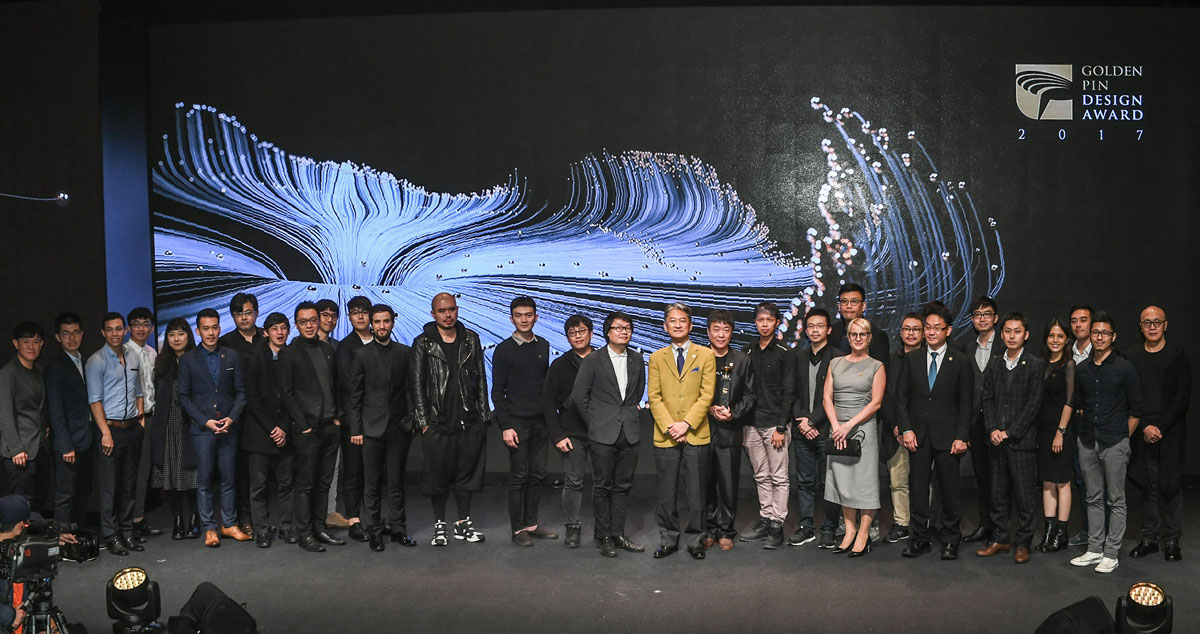
This year, the event welcomed works from 14 different countries with the majority of the entries coming from Chinese- speaking nations, others from Europe, the USA and the ASEAN member countries such as Thailand, Malaysia and Singapore as well as a few first-timers from the Netherlands and Indonesia. 455 selected works were initially given the Design Mark awards before the judging panel chose the 72 best works from the four categories prior to narrowing down the number to the 23 Best Design Winners.
Last year, the head of the judging panel was Oki Sato of Nendo Design and 2017’s Golden Pin selected another Japanese designer, Kazuo Tanaka, CEO of GK Design Group Inc. to oversee the selection process with 23 other judges who were primarily from the Taiwanese and Asian design industries such as Rossana Hu, Kristof Crolla and Martin Darbyshire.

a short film the mystery of victim blaming designed by simpleinfo
- a short film the mystery of victim blaming designed by simpleinfo
- a short film the mystery of victim blaming designed by simpleinfo
- a short film the mystery of victim blaming designed by simpleinfo
One of the most interesting projects of the 2017 Golden Pin Design Award was the infographic short film titled ‘The Mystery of Victim Blaming’ by Taiwan’s SimpleInfo Design inspired by two high- profile cases that took place back in 2015. The first case was the bombingof a party at Formosa Fun Coast that took the lives of 15 teenagers and the other case was the rape of a female victim at the Faculty of Psychology at a Catholic university. Both incidents ignited widespread discussion amongst the online community as well as on offline media platforms, but the even bigger controversy came from the society’s placing of the blame on the dead teenagers and their choices to party and the slut shaming of the rape victim. SimpleInfo Design’s use of the selected color scheme and two-dimensional illustrations are visually simple and easily accessible by a mass audience, making the messages about these serious issues such as deadly accidents and the victimization patterns of rape victims more digestible. The short film calls out for the society to stop blaming the dead and rape victims while providing useful information about crime in the Taiwanese society.
- The opening memorial posTer which Timonium lake designed for yizhen TradiTional folk belief museum
- The opening memorial posTer which Timonium lake designed for yizhen TradiTional folk belief museum
- The opening memorial posTer which Timonium lake designed for yizhen TradiTional folk belief museum
- The opening memorial posTer which Timonium lake designed for yizhen TradiTional folk belief museum
Next up is the poster designed for Yizhen Traditional Folk Belief Museum in Tainan by Taiwanese firm Timonium Lake Design. What’s interesting about the work is the presentation and modernization of the convention of art that belongs to the Hans living in Tainan. It includes the use of colors, lines and an illustration style as well as the powerful and unprecedented narrative communicated through a series of posters. Then there is a product design project titled Yi-Chang-Ming-Pien: Portable Printing Press by Taiwan’s 11 Architecture, in which it is extra interesting to see an architecture studio being given an award in the product design category. The compact name card printer is used for the printing of personal name cards. Using Cypress wood, an abundant material in Taiwan, the printer is the size of a pencil box with the inside containing the steel letterpress blocks, a ruler, a set of blank name card papers, and a roller for printing letterpress blocks, allowing for the name cards to be printed in the amount of the user’s own preference. The creation provides a solution to excessive minimum orders when it comes to printing name cards while interestingly preserving and simplifying the traditional letterpress printing method.
- Yi-chang-Ming-Pien: Portable Printing Press by 11architecture
- Yi-chang-Ming-Pien: Portable Printing Press by 11architecture
For packaging design, Chosen Tea 1869 – a Taiwanese tea series by Dot Design is another Taiwanese firm that brought home an award. This particular brand of tea is one of KHPACK enterprise’s products. The Chinese word of Chosen Tea 1869 can be translated into English as “Click and Select” to reflect that tea can be meticulously crafted into a decent gift. The packaging is made of recycled cardboard in a form that is simplified from the silhouette of a mountain, conveying the place of origin where the tea is being grown. The packaging contains either 2 large packs or 4 small packs of tea. We talked to Lance Han and asked him about the logistical methods of the package and the answer he gave was that the package is designed to be vertically stacked to prevent damage caused by transportation, allowing for the product to be safely transported even in large numbers.
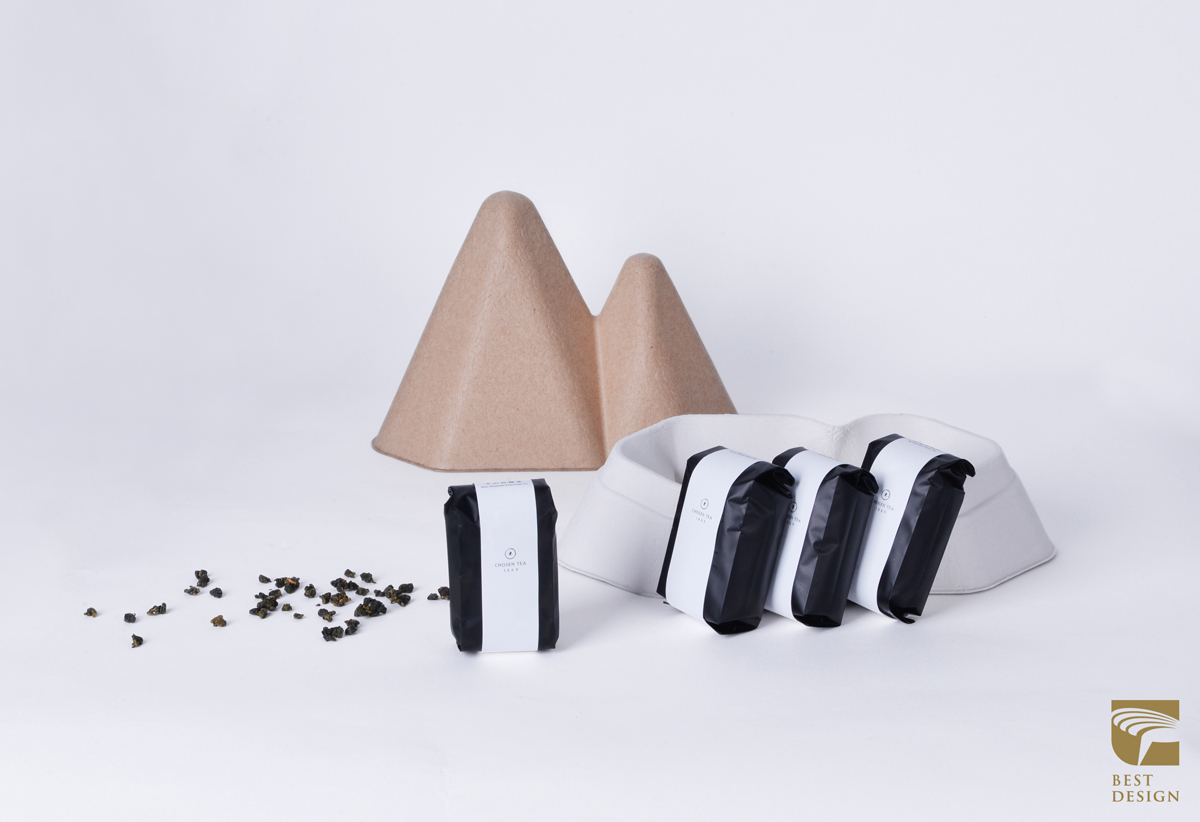
chosen tea 1869 (taiwanese tea series) by Dot Design co., ltd.
- chosen tea 1869 (taiwanese tea series) by Dot Design co., ltd.
- chosen tea 1869 (taiwanese tea series) by Dot Design co., ltd.
Last but not least is the exhibition 2017 Creative Expo Taiwan | Theme Pavilion | CULTURAL EXPLOSION by InFormat Design Curating from Taiwan, who was also one of the winners in the Spatial Design category. The exhibition works well with the content as the curator attempts to break away from the monotonous notion of culture to the subject of urban lifestyle. The design team uses conventional mediums such as white papers that are hung from the ceiling at different heights with each piece of paper containing information about the exhibition. The design conveys the variations and layers of cultural history that evolved into today’s contemporary lifestyle as well as the future of Taiwan that relies on the country’s booming creative industry. One of the examples is the wayfinding sign hung from the ceiling that leads to a bus to the high- speed train station.

The exhibition view of the 2017 creative expo Taiwan themed cultural explosion
- The exhibition view of the 2017 creative expo Taiwan themed cultural explosion
- The exhibition view of the 2017 creative expo Taiwan themed cultural explosion
- The exhibition view of the 2017 creative expo Taiwan themed cultural explosion
Apart from Golden Pin Design Award, Golden Pin Concept Design Award 2017 recognitions are given to the 3 best conceptual design projects, offering entries from around the world the chance to win USD 9,500, which is used for the development of the conceptual idea into the actual work. The 3 winning projects were AQUAIR from Hondurus, a portable fog harvesting machine that turns fog and humidity into drinking water, Bamboodia, an affordable prosthetic leg made of bamboo and Cream Mincho, a font design inspired by the delicate tip and form of whipped cream that comes out of an aerosol can.
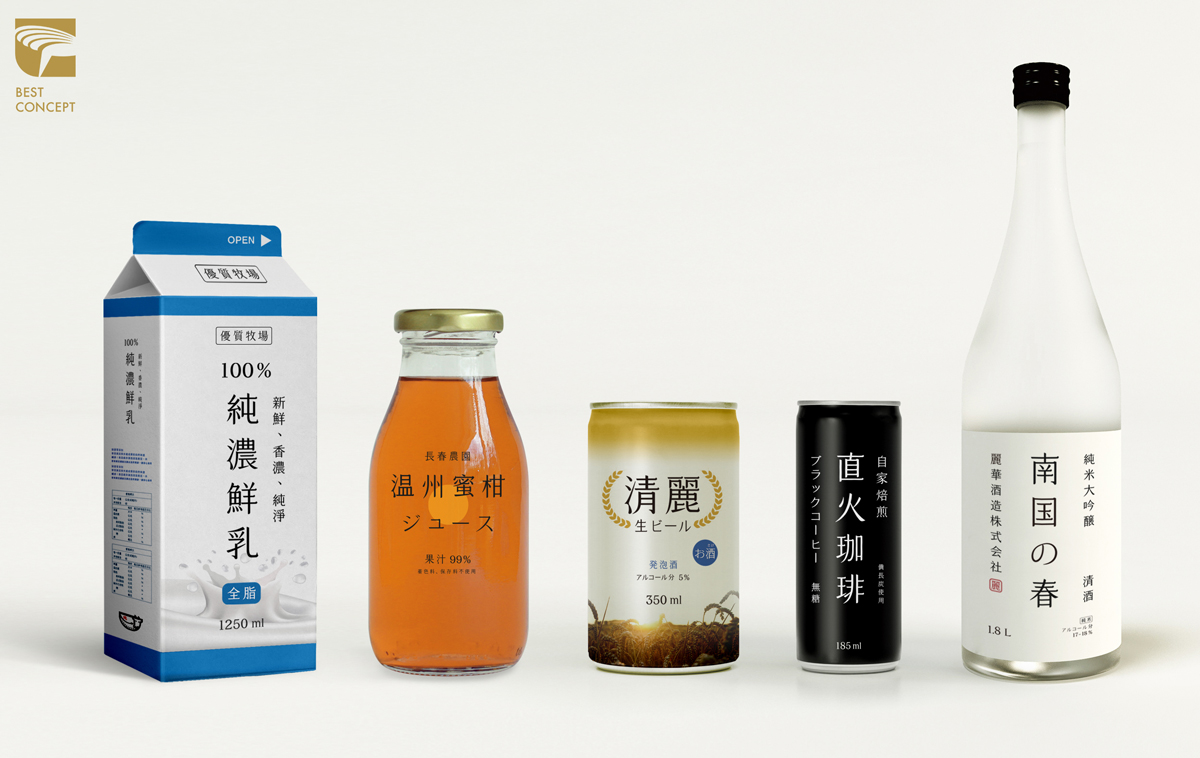
Cream mincho by Shih and bo-han
- Cream mincho by Shih and bo-han
- Cream mincho by Shih and bo-han
- Cream mincho by Shih and bo-hanCream mincho by Shih and bo-han
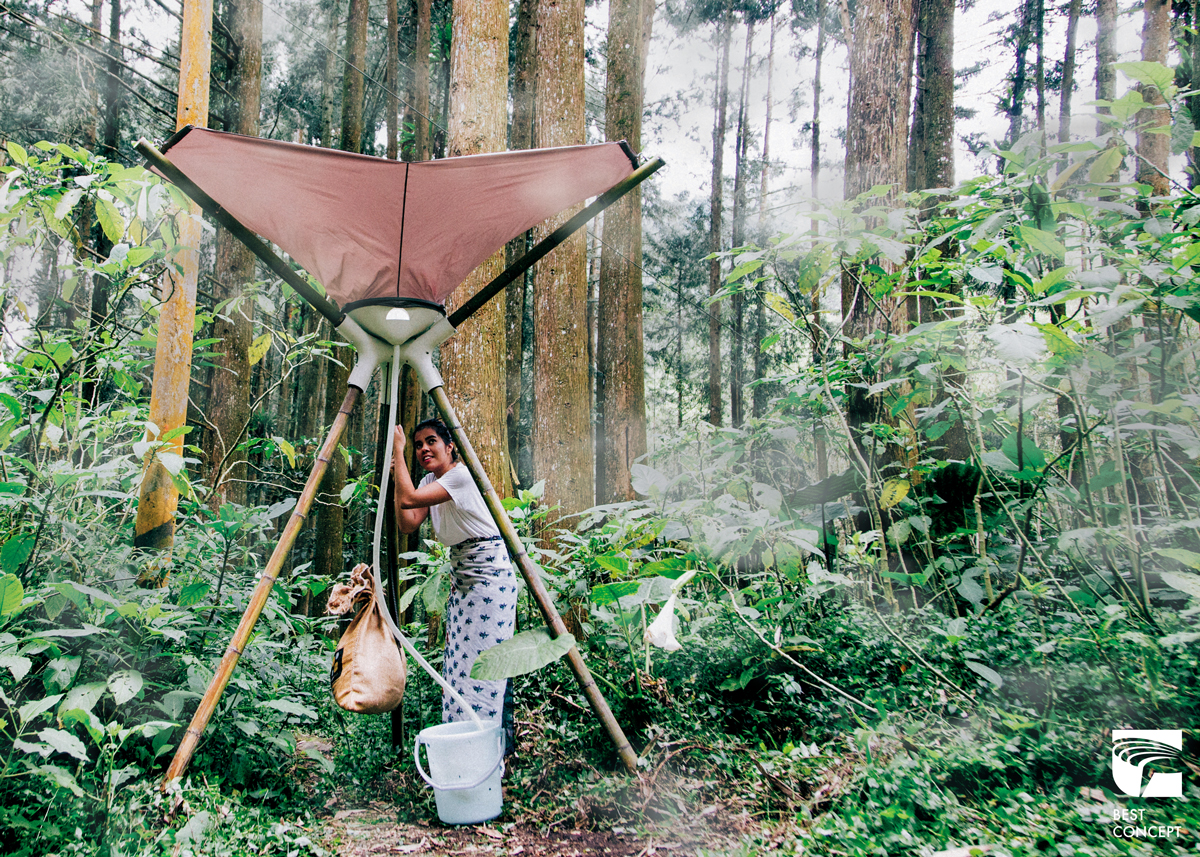
AQUAir by ong, Wei-yee lin, hsin-Ju Chang, Shih-min and marco villela
- AQUAir by ong, Wei-yee lin, hsin-Ju Chang, Shih-min and marco villela
- AQUAir by ong, Wei-yee lin, hsin-Ju Chang, Shih-min and marco villela
- AQUAir by ong, Wei-yee lin, hsin-Ju Chang, Shih-min and marco villelaAQUAir by ong, Wei-yee lin, hsin-Ju Chang, Shih-min and marco villela
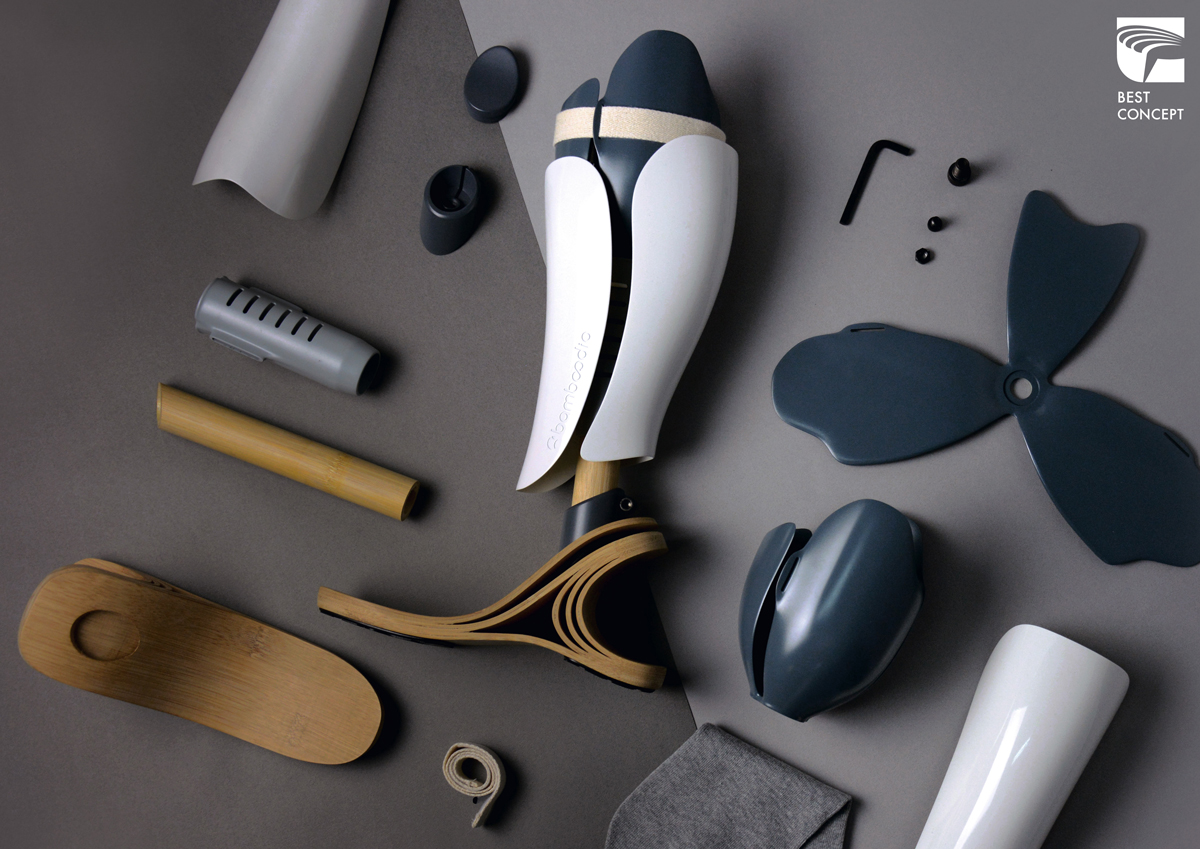
bamboodia by yu chi, Wang and yu man huang
- bamboodia by yu chi, Wang and yu man huang
- bamboodia by yu chi, Wang and yu man huang
- bamboodia by yu chi, Wang and yu man huang
- bamboodia by yu chi, Wang and yu man huang
In general, Golden Pin Design Award reflects the enthusiasm and seriousness of Taiwan’s design industry. We outsiders get to see how the country is determined and regards its creative industry as one of the most important national policies on par with the promotion of Taiwan as one of Asia’s most appealing travel destinations. It is rather obvious that the awards are being given to designers from Taiwan more than other Chinese- speaking counties as one can see the list of winners that is made up of 70% Taiwanese firms with 3 winning projects being from Japan, 2 from China and one each from Hong Kong and Germany. The selection of the 72 finalists sees a great divide between the works that utilize high technology with a highly industrial look and the very crafty products that come with a more time-consuming production process and are less commercial (most of the projects of this nature are created for the sake of passion, not business). We do believe that whenever a design is able to put two and two together and finds a way to achieve standardized industrial production that allows for mass amounts of the product to be made with one of the world’s largest and most lucrative markets such as the Chinese speaking world as its strong and potential consumer, the creators and manufacturers will be able to survive and sustain in this day and age of the country’s growing creative industry.
/ THE TERM ‘CONVERGENCE’ EMBODIES THE COMING TOGETHER AND INTERACTION OF THE DIVERSITY OF THE DESIGN CREATIONS /
Convergence คือธีมหลักของงาน Golden Pin Design Award ประจำปี 2017 งานประกาศรางวัลสำหรับนักออกแบบที่พูดภาษาจีน (Huaren) ในสาขา visual communication, packaging design, product design และ spatial design ที่จัดโดย Taiwan Design Center มาตั้งแต่ปี 1981 ธีมของปีนี้มาจากไอเดียของ BITO สตูดิโอออกแบบโมชั่นกราฟิกชื่อดังของไทเป Keng-Ming Lu โดยผู้ก่อตั้ง BITO ให้เหตุผลไว้ว่า ทุกวันนี้งานออกแบบของเอเชียอยู่ในพื้นที่ที่มีวัฒนธรรมไหลมารวมกัน แถมยังต้องมาปะทะกับเทคโนโลยีและนวัตกรรม และไม่ใช่เพียงแค่สาขาใดสาขาหนึ่งของงานออกแบบเท่านั้น แต่การไหลรวมกันที่ว่านี้ยังหมายถึงงานออกแบบสาขาต่างๆ ที่เดี๋ยวนี้แทบจะแยกขาดจากกันไม่ได้แล้ว คำว่า convergence หรือการรวมกันของสายน้ำจึงเป็นที่มาที่ทำให้เราได้เห็นทั้งการออกแบบนิทรรศการ งานกราฟิกบนพื้นที่หน้างานประกาศรางวัล รวมไปถึงงานโมชั่นกราฟิกล้วนเต็มไปด้วยความลื่นไหลของวัตถุนามธรรมที่ไหลมารวมกัน
Golden Pin Design Award จัดขึ้นช่วงต้นเดือนธันวาคมของทุกปีที่ Songshan Cultural and Creative Park ในย่าน Xinyi กลางกรุงไทเป ประเทศไต้หวัน ข้อดีของการจัดงานที่นี่ก็คือ ทุกอย่างถูกรวมไว้ในพื้นที่เดียวกันหมด นิทรรศการที่โชว์ผลงานที่เข้ารอบสุดท้ายจัดแสดงขึ้นที่ Taiwan Design Center ส่วนงานฟอรั่มและคืนประกาศรางวัลก็จัดที่ Eslite Songyan Spectrum Performance Hall และถ้าอยากซื้อสินค้าบางชิ้นที่ผ่านเข้ารอบสุดท้ายที่มักจะเป็นแบรนด์ของไต้หวัน คุณก็สามารถหาซื้อของจริงกันได้เลยที่ Eslite Songyan Store รวมไปถึงร้านขายของออกแบบขนาดเล็กที่ซ่อนตัวอยู่บริเวณ Taiwan Design Museum
สำหรับปีนี้มีผลงานส่งเข้ามาประกวดจากทั้งหมด 14 ประเทศ หลักๆ มาจากประเทศที่มีคนในประเทศพูดภาษาจีน จนไปถึงทางยุโรปและอเมริกา รวมทั้งประเทศอาเซียนอย่าง ไทย มาเลเซีย และสิงคโปร์ ปีนี้ยังมีประเทศใหม่ๆ อย่างเนเธอร์แลนด์และอินโดนีเซียร่วมส่งผลงานเข้ามาด้วย ผลงานที่มีคุณภาพของปีนี้ทางกรรมการจะให้รางวัลที่เรียกว่า Design Mark ก่อนในขั้นแรก และปีนี้ผู้จัดก็มอบรางวัลนี้ให้กับผลงานจำนวน 455 ชิ้น จากนั้นคณะกรรมการก็จะคัดเลือกงานที่ดีที่สุดจากทุกสาขาจำนวน 72 งาน แล้วค่อยเลือกที่ดีที่สุดมาคัดให้เหลือแค่ 23 รางวัลเท่านั้นสำหรับผู้ที่ได้ชื่อว่าเป็น Best Design Winners
ปีที่แล้ว หัวหน้าคณะกรรมการตัดสินรางวัลคือ Oki Sato จาก Nendo Design มาปีนี้หัวหน้าคณะกรรมการก็เป็นนักออกแบบสัญชาติญี่ปุ่นอีกครั้ง เขาคือ Kazuo Tanaka CEO ของ GK Design Group Inc. บริษัท industrial design ขนาดใหญ่จากญี่ปุ่น ร่วมมือกับกรรมการรายอื่นจำนวน 23 รายที่ส่วนมากเป็นผู้อยู่ในแวดวงการออกแบบของไต้หวันและเอเชีย อย่างเช่น Rossana Hu, Kristof Crolla หรือว่า Matin Darbyshire
รางวัลที่น่าสนใจและอยากพูดถึงของปีนี้ที่เราคัดมาก็คือ ผลงานหนังสั้นอินโฟกราฟิกที่ชื่อ The Mystery of Victim Blaming ผลงานของ SimpleInfo Design จากไต้หวัน ที่ได้แรงบันดาลใจมาจากคดีสะเทือนขวัญ 2 คดีที่โด่งดังของไต้หวันเมื่อปี 2015 คดีแรกคือ เหตุการณ์การระเบิดที่ปาร์ตี้แห่งหนึ่งที่ Formosa Fun Coast ที่ทำให้มีผู้เสียชีวิตเป็นวัยรุ่นกว่า 15 ชีวิต อีกคดีหนึ่งก็คือคดีการข่มขืนหญิงสาวที่คณะจิตวิทยา มหาวิทยาลัยคาธอลิกแห่งหนึ่ง ทั้ง 2 คดีที่ว่านี้เป็นที่พูดถึงกันมากในโลกออนไลน์และออฟไลน์ของไต้หวัน แต่สิ่งที่โด่งดังกว่าตัวคดีและทำให้เกิดคำถามก็คือ การเบลมไปที่เหยื่อที่ตายว่าไปปาร์ตี้กันทำไม และเบลมไปที่เหยื่อที่ถูกข่มขืนว่าเป็นพวกแพศยา ที่ไม่รู้จักรักนวลสงวนตัว SimpleInfo Design เลือกใช้ชุดสีและใช้งานภาพประกอบ 2 มิติแบนๆ ที่ดูเรียบง่ายแต่ทำให้สามารถเข้าถึงผู้คนได้ไม่ยากในการให้ข้อมูลที่ซีเรียสของอันตรายที่อาจเกิดขึ้นจากอุบัติเหตุและรูปแบบการถูกกระทำของเหยื่อที่ถูกข่มขืน หนังสั้นเรื่องนี้พยายามเรียกร้องไม่ให้สังคมเอาแต่โทษคนที่ตายและคนที่โดนข่มขืน รวมทั้งให้ข้อมูลในการระแวดระวังภัยในไต้หวันอีกด้วย
ถัดมาก็คืองานออกแบบโปสเตอร์ให้กับ Yizhen Traditional Folk Belief Museum ที่เมือง Tainan ผลงานออกแบบของ Timonium lake design จากไต้หวันอีกเช่นกัน ความน่าสนใจของผลงานชิ้นนี้อยู่ที่วิธีการนำเสนอหน้าตาของศิลปะตามขนบของชาวฮั่นที่อาศัยอยู่ใน Tainan ให้ออกมาดูทันสมัย ทั้งการใช้สี ลายเส้น และสไตล์ภาพประกอบ รวมทั้งการเลือกเรื่องที่จะสื่อสารผ่านโปสเตอร์ซีรีส์นี้ออกมาได้ทรงพลังและไม่เคยเห็นที่ไหนมาก่อน ถัดมาคืองานออกแบบผลิตภัณฑ์ที่เรียกว่า Yi-Chang-Min-Pien: Portable Printing Press ผลงานของ 11Architecture จากไต้หวัน งานนี้น่าสนใจไม่น้อยก็ตรงที่สตูดิโอออกแบบสถาปัตยกรรมกลับได้รับรางวัลออกหมวดออกแบบผลิตภัณฑ์นี่แหละ พวกเขาสร้างสรรค์สิ่งที่เรียกว่า เครื่องพิมพ์นามบัตรขนาดพกพา สำหรับใช้พิมพ์นามบัตรส่วนตัวออกมาด้วยการใช้วัสดุที่ขึ้นชื่อว่ามีมากในไต้หวันอย่าง ไม้สนไซเปรส ทำเป็นกล่องขนาดเท่ากล่องดินสอ ภายในบรรจุตัวพิมพ์ เหล็ก ไม้บรรทัด กระดาษขนาดนามบัตรและแท่นหมุนสำหรับพิมพ์แบบ letterpress ให้เราสามารถพิมพ์นามบัตรออกมาได้ตามต้องการเพื่อตัดปัญหาเรื่องการพิมพ์นามบัตรทีละจำนวนมาก รวมทั้งยังรักษาการใช้วิธีพิมพ์แบบดั้งเดิมในปริมาณจำกัดได้ออกมาอย่างน่าสนใจ
ต่อกันด้วยงานออกแบบแพ็คเกจ Chosen Tea 1869 – Taiwanese tea series ของทีม Dot Design จากไต้หวันอีกแล้ว ชายี่ห้อนี้เป็นสินค้าของ KHPACK enterprise ที่คำว่า Choosen Tea 1869 จากภาษาจีนสามารถแปลเป็นอังกฤษได้ว่า “Click and Select” เพื่อสะท้อนให้เห็นว่า ชา ก็เป็นผลิตภัณฑ์ที่เราสามารถบรรจงเลือกเพื่อให้เป็นของขวัญได้ บรรจุภัณฑ์นี้ทำจากกระดาษการ์ดบอร์ดรีไซเคิลขึ้นรูปเป็นฟอร์มที่ตัดทอนมาจากภูเขาเพื่อสะท้อนให้เห็นถึงแหล่งปลูกชาบนยอดเขา ด้านในภูเขาบรรจุชาได้ทั้งแบบ 2 ห่อใหญ่หรือ 4 ห่อเล็ก เรามีโอกาสได้คุยกับ Lance Han และถามถึงวิธีการ logistics แพ็คเกจตัวนี้ ก็ได้รับคำตอบมาว่าแพ็คเกจภูเขานี้สามารถถอดประกอบเป็นส่วนยอดเขาและส่วนตีนเขาได้ เพื่อให้เวลาขนส่งสามารถซ้อนกันเป็นแนวตั้งไม่ทำให้แพ็คเกจเกิดความเสียหายและง่ายต่อการขนส่งทีละจำนวนมากๆ สุดท้ายคืองานออกแบบนิทรรศการ 2017 Creative Expo Taiwan | Theme Pavilion | CULTURAL EXPLOSION ของ InFormat Design Curating จากไต้หวัน ที่เป็นหนึ่งในผู้ชนะจากหมวด Spatial design นิทรรศการนี้น่าสนใจตรงที่มันทำงานร่วมกับ content ได้อย่างลงตัว คิวเรเตอร์นิทรรศการนี้ต้องการฉีกความจำเจของคำว่า วัฒนธรรมแบบเดิมๆ ในอดีตเปลี่ยนเป็นมาเล่นเรื่อง urban lifestyle แทน ทีมนักออกแบบเลยเลือกใช้มีเดียดั้งเดิมอย่างกระดาษขาวใส่ข้อมูลนิทรรศการลงไปบนนั้นและจับแขวนห้อยลงมาจากเพดานในความยาวที่ต่างกันเพื่อสื่อให้เห็นถึงเลเยอร์ต่างๆ ของประวัติศาสตร์ทางวัฒนธรรมจนมาถึงชีวิตร่วมสมัยในปัจจุบันและอาจจะเลยไปถึงชีวิตในอนาคตที่พึ่งพาสิ่งที่เรียกว่า อุตสาหกรรมสร้างสรรค์ของไต้หวัน อย่างเช่นป้าย wayfinding ที่แขวนลงมาว่าเป็นป้ายรถบัสที่นั่งไปยังสถานีรถไฟความเร็วสูง
นอกจากรางวัล Golden Pin Design Award แล้ว ยังมีอีกรางวัลหนึ่งที่ชื่อ Golden Pin Concept Design Award 2017 ที่เป็นรางวัลที่จะมอบให้กับ 3 สุดยอดงานออกแบบที่ยังไม่ได้ผลิตจริง เพื่อเปิดโอกาสให้นักออกแบบจากทั่วโลกส่งผลงานมาร่วมประกวด รางวัลที่มอบให้คือเงินสดจำนวน 9,500 เหรียญสหรัฐฯ สำหรับนำไปพัฒนาให้ผลงานของพวกเขาเกิดขึ้นจริง และ 3 ผลงานที่ได้รางวัลนี้ก็ถือว่าน่าสนใจทั้ง 3 ชิ้น นั่นคือ AQUAIR เครื่องผลิตน้ำดื่มที่ใช้วิธีดักจับความชื้นในอากาศของเมืองที่มีหมอกและความชื้นมากอย่างประเทศ Hondurus รางวัลถัดมาก็คือ Bamboodia ขาเทียมราคาประหยัดที่ผลิตด้วยไม้ไผ่ และสุดท้ายคือ Cream Mincho ชุดตัวอักษรภาษาจีนที่ได้ไอเดียมาจากความโค้งงอนของปลายวิปครีมเวลาที่เรากดวิปครีมออกมา
โดยรวมแล้วรางวัล Golden Pin Design Award ยังโชว์ให้เห็นความเอาจริงเอาจังของวงการออกแบบไต้หวันได้เป็นอย่างดี พวกเขาดูมุ่งมั่นราวกับว่านี่คือนโยบายสำคัญระดับชาติพอๆ กับการเปิดบ้านตัวเองให้เป็นแหล่งท่องเที่ยวที่น่าไปมากๆ อีกแห่งหนึ่งของเอเชีย อย่างที่เราจะเห็นได้ว่ารางวัลนี้ยังเป็นเวทีของนักออกแบบชาวไต้หวันมากกว่านักออกแบบที่พูดภาษาจีนในประเทศอื่นๆ เราสามารถเห็น list รายชื่อของผู้ที่ได้รางวัลกว่า 70% เป็นผลงานออกแบบจากไต้หวัน มีผลงานจากญี่ปุ่น 3 รางวัล จีน 2 รางวัล ฮ่องกงและเยอรมันอย่างละ 1 รางวัลเท่านั้น งานออกแบบที่ถูกเลือกเข้ามาจนถึง final list ทั้ง 72 งานเป็นการแบ่งข้างกันอย่างชัดเจน ระหว่างงานออกแบบที่ใช้เทคโนโลยีขั้นสูง หน้าตาอุตสาหกรรมสุดๆ กับงานที่ craft มากๆ ใช้เวลามากๆ และไม่ค่อย commercial สักเท่าไร (เพราะส่วนมากทำแบบใจรักโดยไม่ได้คำนึงถึงเรื่องธุรกิจ) เราเชื่อว่าเมื่อไรก็ตามที่งานออกแบบที่จับ 2 แนวทางนี้ไว้ด้วยกันอย่างอยู่หมัด และสามารถผลิตเป็นจำนวนมากในระบบอุตสาหกรรมได้นั้น ตลาดที่ใหญ่ที่สุดตลาดหนึ่งในโลกอย่างตลาดของคนที่พูดภาษาจีนจะทำให้สตูดิโอและผู้ผลิตสามารถอยู่รอดได้อย่างยั่งยืนในโลกของอุตสาหกรรมการออกแบบเวลานี้
TEXT : PIYAPONG BHUMICHITRA
PHOTO COURTESY OF GOLDEN PIN DESIGN AWARD 2017
www.goldenpin.org.tw











